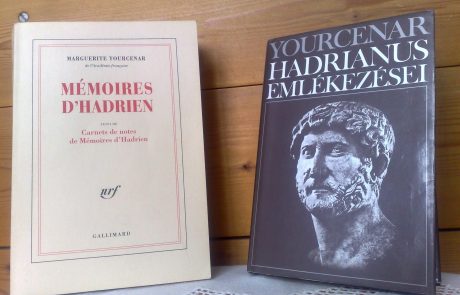Project Description
Marguerite Yourcenar and Grace Frick
Marguerite Yourcenar was born in June of 1903 in Brussels to a Belgian mother and a French father, whose name was Michel de Crayencour (Yourcenar, a pen name, is a nearly perfect anagram). Ten days after her birth, Marguerite’s mother died. Her father gathered up the child and returned to his family estate. She had a good substitute for a mother, a young nursemaid, Barbe, who adored her (Marguerite later imagined she must have been her mother’s lover). One day when Marguerite was seven it was discovered that Barbe, on a few occasions, had taken her to “houses of assignation”, where she went now and then to supplement her income. When Marguerite was nine, her father sold the château, and the two of them moved to Paris. A man of leisure, Michel wasn’t home much, but neither was Marguerite. She was out scouring the city: the museums, the streets, the bookstalls. Like most girls of her social class, she never went to school. She had a few tutors, but mostly she educated herself. She taught herself Latin, ancient Greek, English, and Italian; she read everything she could find. In 1929, her father died. She spent the 10 years after her father’s death before the outbreak of World War II traveling, living in small hotels, reading, writing and seducing both men and women. One afternoon in 1937, when she was thirty-three, she was sitting in a hotel bar in Paris talking with a friend about Coleridge when a woman from another table came over and told them they were all wrong. The woman was Grace Frick, an American English professor, almost exactly Yourcenar’s age. Later that year, Yourcenar sailed to the United States to spend the winter in New Haven with Frick, who was starting a dissertation at Yale. In the spring, she returned to France with a decision to make. She had planned to try out only another winter with Grace, but the Second World War intervened. Soon after her novel “Coup de Grâce” came out, in 1939, Yourcenar returned to the United States, where for the next forty years Frick would be her companion, her translator, her household manager, and her shield against the world—possibly the most complete literary wife in the annals of art. Yourcenar stopped writing when she arrived in the United States. For more than a decade, she published almost nothing. She and Grace lived mainly in Hartford, to be near Grace’s work. Soon Yourcenar, too, began teaching, commuting to Sarah Lawrence, just outside New York City, where she gave courses in French and Italian.
Before she left Europe, Yourcenar had deposited a trunk in storage at a hotel in Lausanne. She had been trying for years to get it back, and one day in 1949 it arrived. Opening it, she looked first for some valuables, but all that was left was a bunch of old papers. She pulled her chair up to the fireplace and started pitching things in. Then she came upon the drafts of a novel about Hadrian that she had begun when she was twenty-one and had later put aside. At the sight of those pages, she said, her mind more or less exploded. It is hard to understand how she managed to produce “Memoirs of Hadrian” in two years. “Hadrian” was Yourcenar’s first big success—it made her famous—and the momentum she generated for it lasted close to twenty years. Frick died in 1979, and like Hadrian, Yourcenar had her burial plot prepared, next to Frick’s, in a cemetery near Petite Plaisance. In 1987, she suffered a stroke and soon passed.


